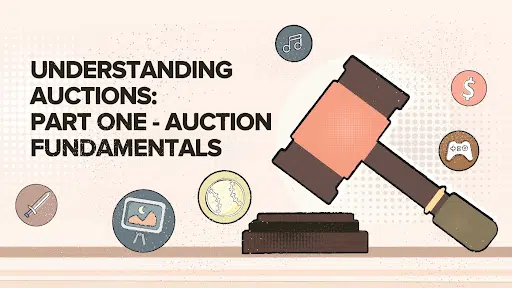Auctions have become a foundational part of our economy and our society, serving as one of the primary mechanisms by which rights and resources are distributed. Auctions are everywhere, and quietly taking place by the millions, all the time, all around the world. There’s a reason why they’re so common. If you have a good sense of how much an item you want to sell is worth, and a clear idea of the type of buyers who might be interested in purchasing it, a simple list-price sale makes sense.
Auctioneers are typically looking to maximize the revenues they receive for their goods. Revenue maximization, however, is just one potential outcome for which auctions can be optimized. Another is efficiency, or social welfare, which is maximized when the winning bidder for a given item is the bidder with the highest valuation for that item. Perhaps surprisingly, these two objectives are not always aligned — the auction design that offers the greatest profits to the seller may not necessarily result in the most efficient allocation, and vice versa. The appropriate auction design for any given market or circumstance may therefore differ depending on whether the objective is to optimize for revenues or social welfare.
Highly sophisticated auctions are sometimes implemented to address unique market circumstances and goals for allocation of auctioned items. Most circumstances, however, don’t require such complex auction design — and in fact, increased complexity ends up being costly to implement, while giving rise to unanticipated incentives and bidder confusion, without providing real advantages for sellers or bidders. In auction design, sometimes simpler is better.
The benefits that all forms of auctions offer to sellers are the following:
- Controlled timeframe for sale: Auctions can often (though not always) give sellers more certainty about when the sale of a product, especially a unique one, will happen, versus simply putting the product out “on a shelf” at a set list price, because listed items may simply never sell. (The caveat to this is that auction time limits can also expire with no bids, or if the seller has a reserve price, none that meet the seller’s reserve requirements.)
- Provide signaling about buyer valuations: Auctions give sellers clarity about how much buyers value an item, for future sales of the same or similar goods, which can also reduce price volatility of the good.
- Some protection against abuse/self-dealing by seller agents: Auction rules and mechanisms are often able to provide transparency about pricing and purchaser traits, helping to make unusual transactions more obvious, thus minimizing the potential for agents to transact with their own preferred buyers.
- Reduce the potential for frontrunning by market abusers: Because auctions aggregate bids and then settle transactions based on a predetermined sequence and rule set, the particular form of market exploitation known as frontrunning (trading ahead of a transaction to soak up some of the value that would otherwise be due to transaction participants) is made harder — even more so in the case of sealed-bid auctions.
Of course, when the conditions under which auctions are run aren’t optimal, auctions may end up no more effective than other market mechanisms. And while auctions are resilient to abuses like front-running, they’re not perfect. They can be impacted by other kinds of abuse, and are also vulnerable to the impact of other extraneous factors that can reduce their efficiency or lower the satisfaction of participants in outcomes.
Want to learn more about the evolution of auctions and the different types of auctions that are common today? Read our in-depth article here.



